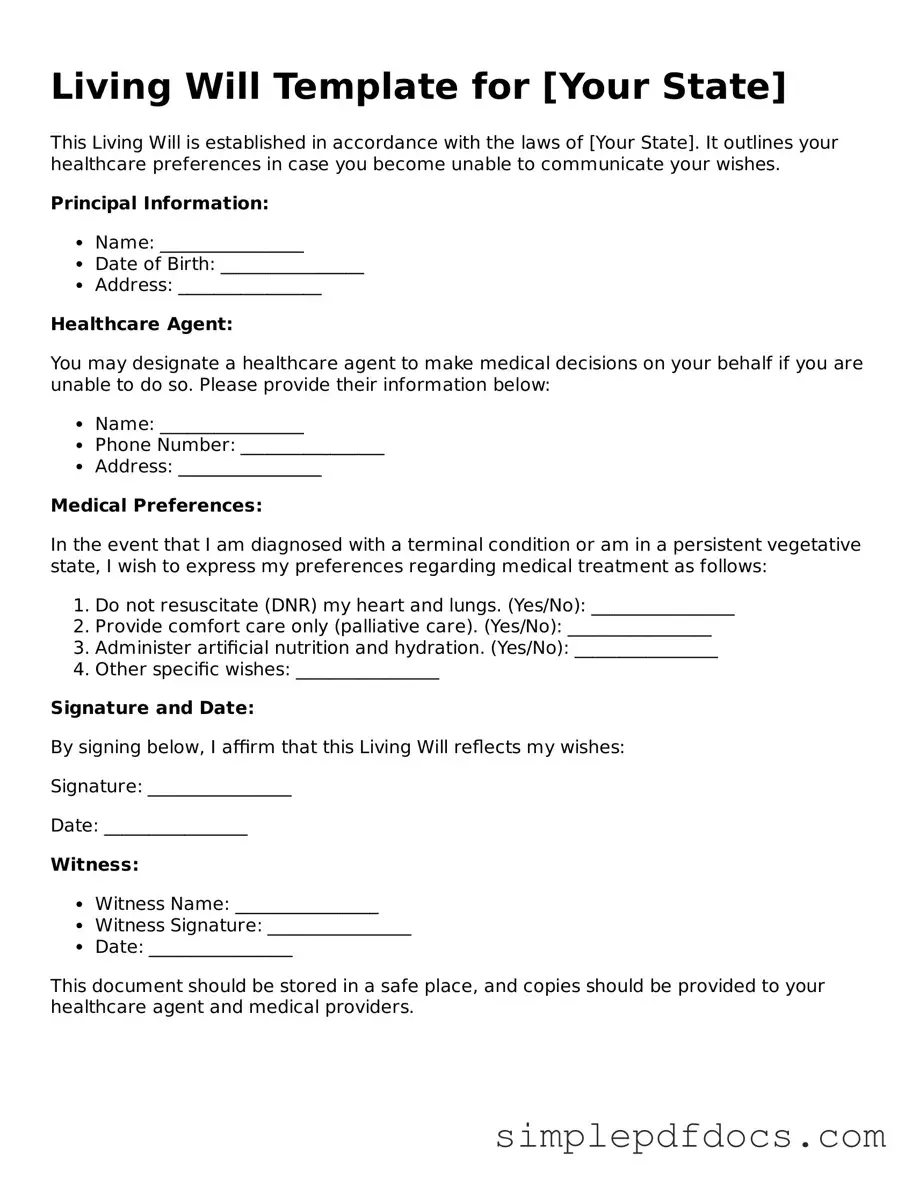A Living Will is an essential document that empowers individuals to express their healthcare preferences in the event they become unable to communicate those wishes. This form typically outlines specific medical treatments one does or does not want, particularly in situations involving terminal illness or incapacitation. It addresses critical decisions regarding life-sustaining measures, such as resuscitation efforts, mechanical ventilation, and nutritional support. By completing a Living Will, individuals can ensure that their values and desires are honored, relieving loved ones from the burden of making difficult choices during emotionally charged moments. Additionally, this document often works in conjunction with other advance directives, such as a healthcare proxy, which designates someone to make medical decisions on behalf of the individual. Understanding the importance of a Living Will can empower people to take control of their healthcare journey, fostering peace of mind for both themselves and their families.
